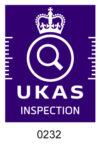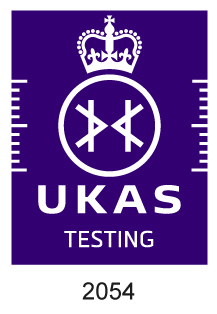Menu
close
**LATEST** New quantitative face fit services for RPE
Book in today
Other fibres are those non-asbestos fibres that are used in construction and manufacturing, often as asbestos-replacement materials in insulation products.
Refractory ceramic fibres (RCF) are considered to be carcinogenic, and have been used as an asbestos replacement material, particularly as insulation to ductwork, fire compartmentation and very high temperature applications such as kilns and furnaces.
Machine (or man) made mineral fibres (MMMF) and aramid fibres have also been used in insulation and fire protection.
Yes. So if these are being installed, replaced or maintained they must be subject to a COSHH assessment and the exposure to these fibres controlled. These fibres have Workplace Exposure Limits (WELs), both as gravimetric (mg/m³) or as a fibre count, in fibres / cm³.
Exposure to harmful substances, elevated noise levels and prolonged use of vibration tools can cause serious ill-health over the longer term. If appropriate controls are not being used then employees will be at risk of serious illness such as cancer, asthma, skin diseases , hand-arm-vibration syndrome and deafness.
Occupational Hygiene is concerned with ‘worker health protection’. It is often described as the recognition, evaluation and control of exposure to workplace hazards. These include agents such as may include chemicals, dust, fumes, noise, radiation, vibration and extreme temperatures. chemical, physical and biological agents arising from workplace activity. The presence of these agents may affect the health and well-being of employees.
The Duty Holder is required by law to protect its employees and others from harm. The minimum you must do is:
1.Identify what could cause injury or illness (hazards)
2.Decide how likely it is that someone could be harmed and how seriously ( the risk)
3.Take action to eliminate the hazard, or if this isn’t possible, control the risk.
This chart highlights the possible health effects associated with different types of contaminants found in the workplace.
The law requires employers to adequately control exposure to substances in the workplace that cause ill health. This is the Control of Substances Hazardous to Health Regulations 2002 (COSHH). In addition, organisations need to work within the legal limits for the amount of substances that can be present in the workplace air. There are also regulations for the control of: Noise , Vibration and Local Exhaust Ventilation. You can view a range of HSE guidance relating to Occupational Hygiene at https://www.hse.gov.uk/pubns/books/index-legal-ref.htm
BOHS is a membership organisation that promotes Occupational Hygiene as the science-based discipline for identifying, assessing and controlling exposure to harmful substances in the workplace. It is the only Occupational Hygiene organisation to be awarded a Royal Charter in recognition of its ‘ unique and pre-eminent role as the leading authority in occupational disease prevention’. BOHS is also a UK based examining board for occupational hygiene qualifications

